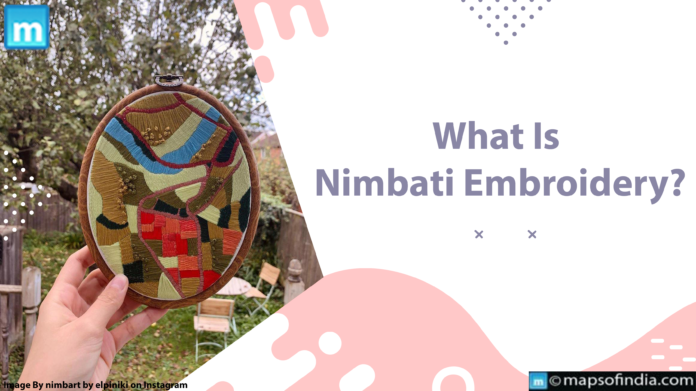Amidst the vibrant tapestry of Rajasthani handicrafts, Nimbati embroidery shines as a unique and exquisite art form. Characterized by its intricate patterns, vibrant colours, and meticulous craftsmanship, Nimbati embroidery boasts a rich history and cultural significance. Let’s delve into the essence of this captivating art form, exploring its origins, techniques, motifs, and the enduring legacy it carries forward.
A Journey Through Time: Unveiling the Origins
The exact origins of Nimbati embroidery remain shrouded in the mists of time. However, historical evidence suggests it flourished during the Mughal era (16th-19th centuries) under the patronage of royal courts. The name “Nimbati” is derived from the Hindi word “nimboo,” meaning lemon, likely due to the extensive use of yellow silk threads in the early days.
Initially practised by the Khatri community in the Barmer district, Rajasthan, Nimbati embroidery served as a form of artistic expression and adorned the attire of royalty and nobility. Over time, the craft transcended social boundaries and found favor among the masses. Today, Nimbati embroidery continues to be practiced in villages like Barmer, Chohtan, and Siwan, and it has been passed down through generations within families.
A Labor of Love: Unveiling the Techniques
Nimbati embroidery is a meticulous and time-consuming process that demands exceptional skill and dedication. Here’s a glimpse into the key techniques involved:
- Fabric Selection: Traditionally, pure silk was the preferred fabric. Today, cotton and a blend of silk and cotton are also used.
- Base Preparation: The fabric is starched to provide stiffness and allow for the creation of intricate designs.
- Pattern Tracing: Skilled artisans meticulously transfer intricate floral or geometric patterns onto the fabric using tracing paper or traditional methods.
Techniques
- Chain Stitch: The foundation of Nimbati embroidery, creating the design outline.
- Filling Stitches: Various filling stitches, such as satin stitch, long and short stitch, and herringbone stitch, are employed to create a rich texture and vibrant colours.
- Zardozi Work: Involves using metallic threads like gold and silver, adding a touch of opulence to the embroidery.
A Tapestry of Colors and Motifs
Nimbati embroidery boasts a captivating blend of colours and motifs that reflect the vibrancy of Rajasthani culture.
- Color Palette: Traditionally, vibrant colors like red, yellow, green, and blue dominated the craft. Modern renditions may incorporate a wider range of colors.
- Motifs: Floral patterns like paisleys, creepers, and lotus buds are prominent. Geometric designs like squares, triangles, and interlacing lines also feature.
The meticulous detailing and contrasting colors create a visually stunning effect, transforming the fabric into art.
Beyond Adornment: The Cultural Significance
Nimbati embroidery transcends its aesthetic appeal and holds deep cultural significance. Traditionally, it adorned the clothing of royalty and nobility and on special occasions like weddings and festivals.
More than embellishment, Nimbati embroidery was a marker of social status and reflected the wearer’s wealth and sophistication. The intricate patterns and vibrant colors often held symbolic meanings, auspicious motifs like the lotus symbolizing purity and prosperity.
Witnessing the Enchantment: Experiencing Nimbati Embroidery
Travel to Barmer, Rajasthan, to witness the magic of Nimbati embroidery firsthand. Visit local workshops and observe the skilled artisans, their nimble fingers weaving intricate patterns with remarkable precision.




